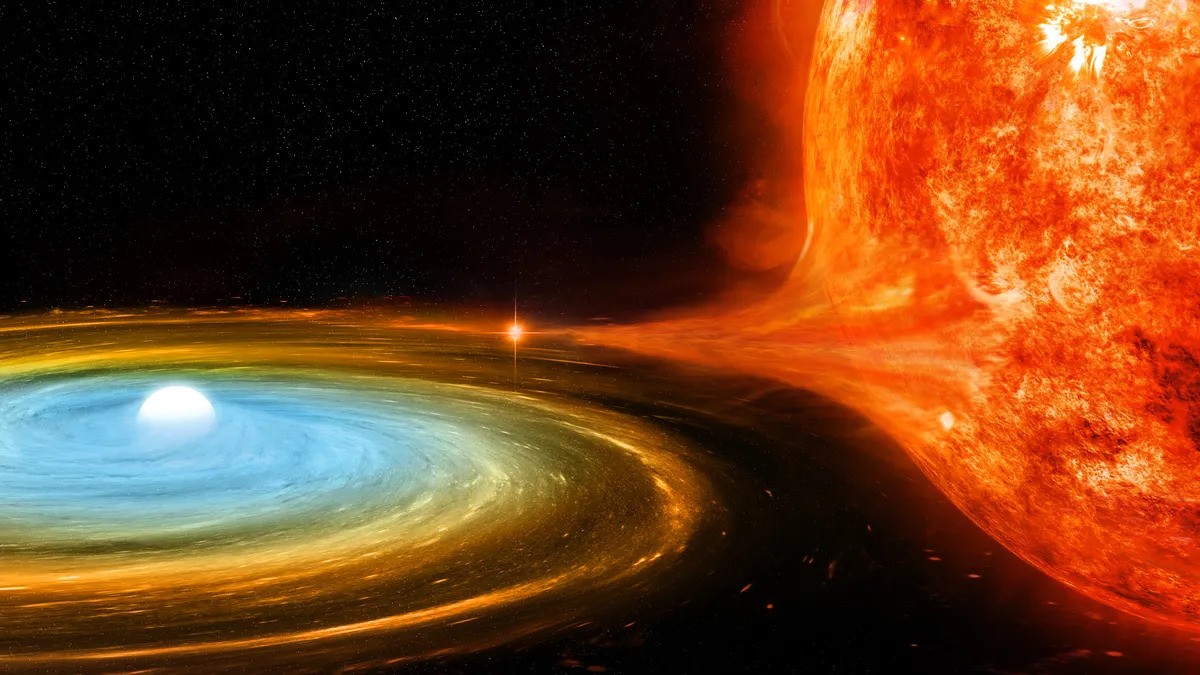Astronomers have found a new cataclysmic system that explosively changes its brightness from time to time. In this case, they feel that the white dwarf’s partner may be brown.

New cataclysmic variable
An international team of astronomers reports the discovery of a new cataclysmic variable. The system, marked SRGeJ041130.3+685350 (or abbreviated SRGeJ0411), has an orbital period of about 100 minutes and can be entered into its composition. The results of the study are described in detail in an article published on January 4 in the Monthly Notices of the Royal Astronomical Society.
Cataclysmic variables (CVs) are binary star systems consisting of a white dwarf and a normal star companion that are found close to each other. Matter is constantly flowing from the latter to the supernova remnant.
From time to time, it becomes too much, and the surface of the white dwarf explodes, and astronomers see an increase in brightness many times. These objects are found in many places, such as the center of the Milky Way galaxy, the vicinity of the Sun, as well as in open and spherical clusters.
What is known about the newly discovered system?
SRGeJ0411 was discovered during the SRG/eROSITA worldwide review and identified as a candidate for variables due to the high X-ray to optical flux ratio at a level of 0.6. Its visible spectrum shows noticeable emission lines of hydrogen and helium, which is typical for cataclysms.
According to research, SRGeJ0411 has an orbital period of 97.53 minutes. The white dwarf in the system remains only one percent of the size of the Sun, and its mass is estimated at 0.84 solar masses. The surface temperature is 13,790 K.
As for the other component of the SRGeJ0411 system, the authors of the study suggest that it may be a brown dwarf. The object has a radius less than 0.11 solar, a mass of 0.04 solar masses, and its temperature is estimated at 1,800 K.
According to phys.org
Follow us on Twitter to get the most interesting space news in time
https://twitter.com/ust_magazine


